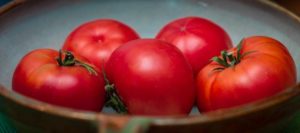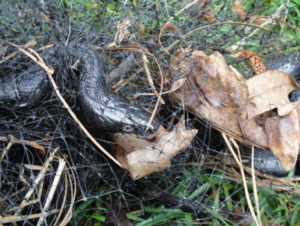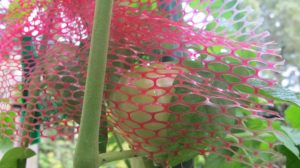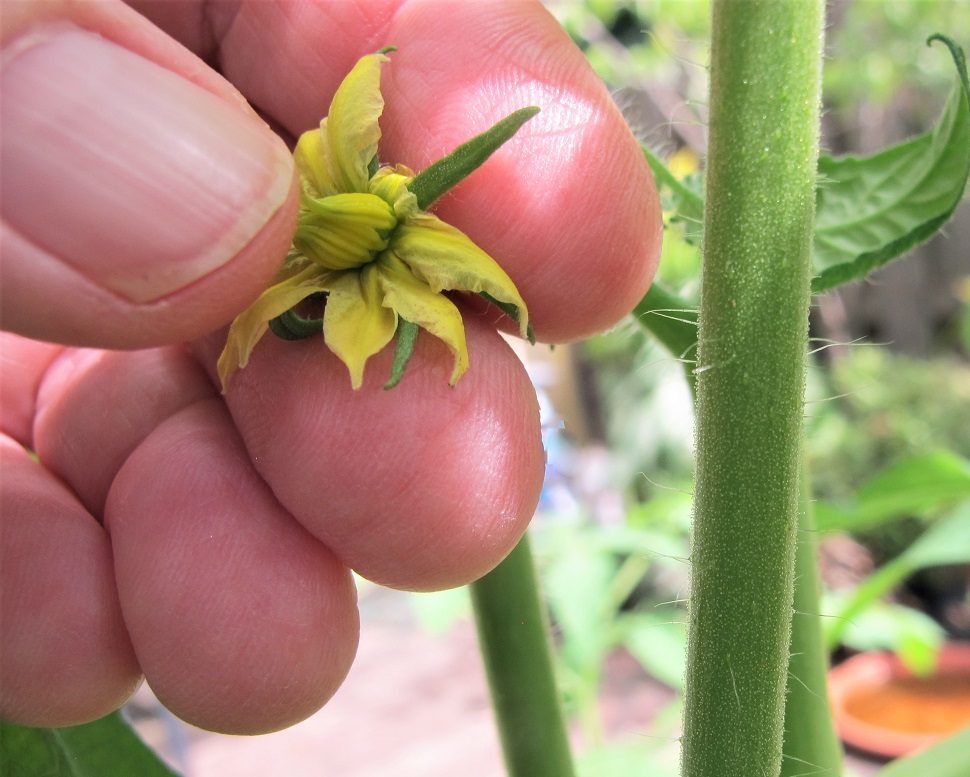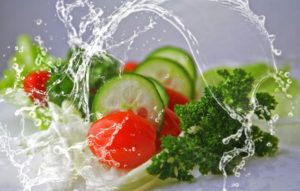2018
Here Are Some Simple Solutions If Your Tomato Plants Have No Fruits In July and August
No Fruits In Hot Weather?
It looks as if we’re in for more above-normal temperatures in the Southeast through the growing season. No surprise there! I’m going to spend a few minutes to explain why we often have no fruits on our tomato plants when it gets real hot outside. In most years, though, production picks up again in late August or September when the temperatures drop several degrees.
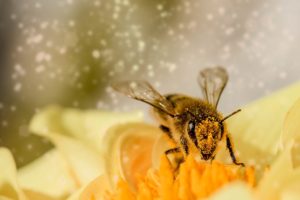 The main crop that most home gardeners are concerned with is the tomato, although this could happen to peppers, eggplants, and other vegetables as well. When temperatures soar into the 90’s F, the pollen produced in the flower is “denatured”, or, essentially, killed. No pollen means no fruits!
The main crop that most home gardeners are concerned with is the tomato, although this could happen to peppers, eggplants, and other vegetables as well. When temperatures soar into the 90’s F, the pollen produced in the flower is “denatured”, or, essentially, killed. No pollen means no fruits!
When the air is very still or humid, the pollen grains are less likely to be dispersed. But, we can’t control the weather, so I’ll concentrate on what we can do.
Try Some Shade For Tomatoes With No Fruits

Before you replace your vegetables with agaves and astroturf, there is something you can try in order to harvest a continuous crop. If temperature is the problem, and not lack of pollinating insects, you can simply provide a bit of shade during the hottest part of the day, usually from 1:00 to 5:00 in the afternoon.
Here’s How:
Some tall stakes stuck in the ground and an old sheer curtain could work. Make sure any covering is above the foliage, so air flow is not impeded. One day, a customer stopped by the garden center where I used to work and wanted to thank me for the suggestion. He said he finally (after many years of trying!) was able to get tomatoes in the hot summer months by simply repositioning the patio umbrella to shade his tomatoes for a couple of hours in the afternoon.
Look for black UV stabilized polyethylene mesh, sold as “knitted shade cloth”, from garden supply companies. Johnny’s Selected Seeds lists the product in their catalog. For the hot south, a product that casts 30% shade works well. Or you might find that 50% shade works better. Position it overhead, and on the west side to cut the harsh afternoon sun. A little experimenting will indicate the best arrangement.
If you have a package of black deer netting, folding it over several times will give you about the same effect as the shade cloth. Check it daily, though, for snakes that can get caught up in it. A few times, I used sharp-pointed scissors to free non-venomous snakes that had become entangled in the netting.
Another option is lattice or snow fence attached to a sturdy frame.
The point is not to block all the light. You just want to moderate the harsh sun for a few hours a day, dropping the temperature to below 90 degrees. Not every growing season will require this mitigation. But, if you don’t see tiny tomatoes growing on your plants in mid-summer, this is one option you can try. When the temperatures moderate, remove the covering.
Shading the Flowers and Fruits
Sometimes it’s not practical or necessary to entirely shade the large plants on the deck. So, I’ll use those mesh bags found in the produce section at the grocery store (holding avocados, tangerines, etc.). When it’s hot, I drape the mesh over the young flower cluster. It will stay in place as the fruit develops. This helps keep the animals away and prevents sun scald.
Occasionally we have summers when the temperature hovers in the mid to high 90’s for weeks at a time, not cooling off much at night. We might not get any tomatoes at that time, until the weather cools. But we do harvest more tomatoes by shading than if we did nothing.
Cultivars

‘Sun Gold’ tomato with netting to keep animals away.
Select varieties that are more heat-resistant; their pollen tolerates higher temperatures. Names that allude to the south or to heat are clues that those varieties could grow better in warm climates. ‘Phoenix’, ‘Estiva’, ‘Arkansas Traveler’, ‘Florida 91’, ‘Creole’, ‘Heatmaster’, and ‘Summer Set’ are cultivars often cited as being heat-resistant.
‘Better Boy’, ‘Terenzo’, and ‘Black Krim’ also should do well. The bright orange cherry tomato, ‘Sun Gold’, produces abundantly in our hot summers.
‘Big Beef’ has always been quite productive here and is highly disease resistant. If you must grow your favorites that are susceptible to heat, try using the shade cloth.
Check online or ask your local cooperative extension agent for information on recommended cultivars in your region. The varieties that had bountiful harvests every year when you lived in Buffalo, New York, might be disappointing in Birmingham, Alabama.
Pick Earlier
During very hot weather, fruits might not fully “color-up” to catalog pictures, so don’t leave them too long on the vine. Pick them once they’ve developed some color.
Let them ripen on the kitchen counter, but never in the refrigerator. Tomatoes exposed to temperatures below the mid 50’s undergo cellular changes that rob them of flavor and texture. Certain genes that enhance flavonoids in ripening fruits become inactive in cool temperatures.
Especially during periods of drought, thirsty animals know what’s inside those juicy ripe tomatoes! You won’t miss out on much flavor by picking them a day or two early…but they will.
Letting ripe fruits stay on the vine inhibits the production of new flowers. The plant thinks it has done its job by providing seeds for the next generation. Removing ripe or almost ripe fruits reminds the plant to resume its responsibilities.
Mulch

Pine straw.
Mulch the soil all around the plants with a thick layer of airy mulch, such as pine straw or oak leaves. Clean chemical-free grass clippings mixed with shredded leaves can be used, but not so deep that decomposition generates even more heat. These materials add organic matter to the soil as they break down, keeping the earthworms and the microbes happy, and provide nutrients to the plants.
Mulch also helps prevent disease spores lying dormant in the soil from splashing onto the lower leaves of the plant. And, of course, it holds moisture in the soil and keeps it a little cooler.
Water
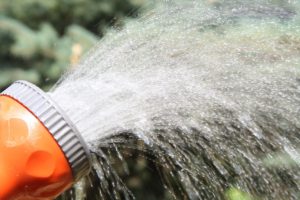
Water thoroughly during hot, dry weather to moisten the top 10″ to 12″ of soil once or twice a week (more often in sandy soils). Established vegetables, in average soil, need 1″ to 2″ of water per week. Here’s why:
- Lack of water causes wilt, stressing the plant.
- Lack of water causes flower-drop. (Incidentally, flower-drop early in the season can be caused by cool weather.)
- To prevent blossom-end rot, there needs to be enough moisture in the soil to keep calcium in solution.
- Fruits that crack are responding to uneven soil moisture levels, although some cultivars are more susceptible to this. Cracked fruits are still edible, after checking for little critters (insects, slugs, sowbugs) that might be sipping the fluids. Ordinarily, it’s safer to discard fruits that have been partially eaten by raccoons or squirrels.
- And a good watering in hot weather cools down the soil. But first check the temperature of the water coming out of a hose that sits in the sun. It could be too hot for plants. Don’t overdo the watering, which will dilute the flavor of ripening fruits and cause other problems.
Thorough and deep soil preparation invites roots to grow where the soil is cooler and where there’s more moisture. The more we can minimize stressful conditions, the more likely our vegetable garden will perform the way we’d like it to.
Better Pollination
Hand-Pollinate Flowers If No Fruits Are Growing
- Sweet bell pepper.
- Cherokee Purple tomato.
If pollinating insects are not plentiful around your garden, try hand-pollinating your tomatoes and peppers. Usually just shaking, tapping, or vibrating the flower is sufficient for the task.
Each tomato and pepper flower is perfect, containing both male and female flower parts. So, they can self-pollinate as well as receive pollen from other tomato plants. This will work if the pollen hasn’t already been killed by heat.
Photo, above right, shows simple procedure for pollinating a tomato flower. Gently flick, or tickle, a mature, but not old, flower to move pollen to the stigma.
The pepper (photo, above left) was unlabeled and purchased at a big box store. It had a big floppy habit. There were no fruits on it for the longest time, and I was about to remove it. But I gave it one last try, and hand-pollinated all the flowers. Since then, it has yielded a dozen big bell peppers, and it’s still full of fruit.
‘African Blue’ Basil
Plant an ‘African Blue’ basil near the garden. This is an ornamental basil and a pollinator magnet! Because it is sterile and can’t set seed, it keeps flowering all summer long. You can find this variety in late spring or summer as potted transplants.
Few plants attract as many pollinators. Having one of these plants near your vegetables will guarantee visits from honey bees, bumble bees, butterflies, and other pollinators. In fact, bumble bees often spend the night among its flowers, ready to go to work as soon as the sun comes up.
* * * * * * * * *
So, if you’re following sound horticultural practices and can’t understand why your vegetables have no fruits, try shading them for a few hours. Or perhaps one of the other suggestions will work for you.
I’ve had dozens of customers over the years who have tried shading when nothing else worked, and now they enjoy vine-ripened tomatoes and peppers without interruption. Tomato-basil salad, coming up!
